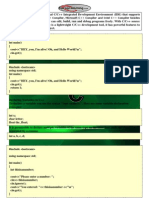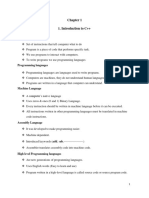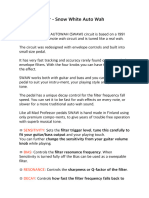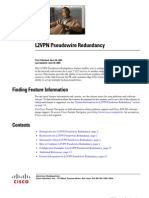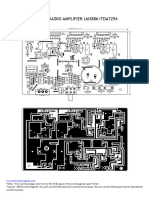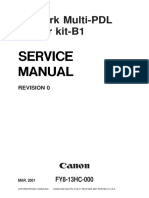100% found this document useful (1 vote)
19 views21 pagesIntroductory Notes On C++
C++ is a high-performance programming language that extends C with object-oriented features, widely used in various domains for its efficiency and flexibility. The document provides an introductory overview of C++, covering its basic structure, data types, input/output operations, control flow statements, functions, arrays, and strings, with practical examples. It aims to equip beginners with essential concepts necessary for understanding and utilizing C++ effectively.
Uploaded by
shilaphCopyright
© © All Rights Reserved
We take content rights seriously. If you suspect this is your content, claim it here.
Available Formats
Download as PDF, TXT or read online on Scribd
100% found this document useful (1 vote)
19 views21 pagesIntroductory Notes On C++
C++ is a high-performance programming language that extends C with object-oriented features, widely used in various domains for its efficiency and flexibility. The document provides an introductory overview of C++, covering its basic structure, data types, input/output operations, control flow statements, functions, arrays, and strings, with practical examples. It aims to equip beginners with essential concepts necessary for understanding and utilizing C++ effectively.
Uploaded by
shilaphCopyright
© © All Rights Reserved
We take content rights seriously. If you suspect this is your content, claim it here.
Available Formats
Download as PDF, TXT or read online on Scribd
/ 21





